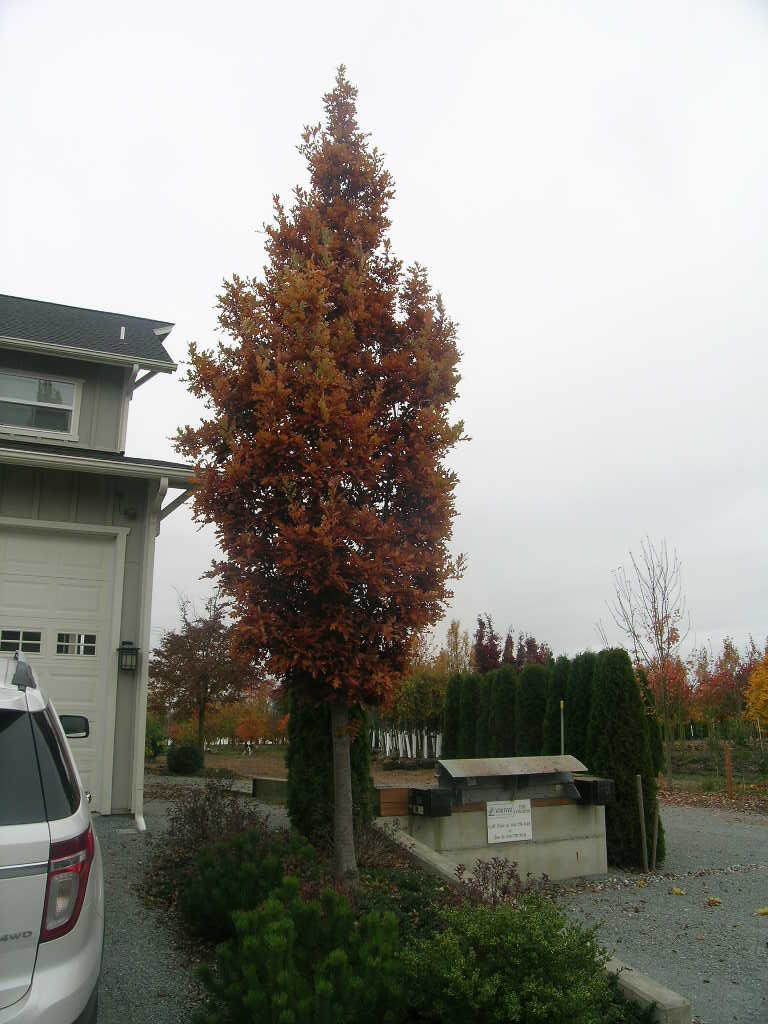Quercus robur x. Q alba 'Crimschmidt'

Take a good look at another tough tall narrow Schmidt introduction in the Crimson Spire Oak. This columnar, tightly fastigiate hybrid of English and White Oak combines the best characteristics of both parents. Dark green to bluish green mildew resistant foliage and reddish fall color is inherited from the White Oak parentage, while the fastigiate growth habit is inherited from the English Oak parentage. Leaves are smaller, dense and almost clustered along the upright lateral limbs. This columnar, tightly fastigiate tree grows to a height of about 45 feet and spread of 15 feet. (USDA Zone 5. Introduced in 1994).
This is a relatively fast growing tree that is drought tolerant and somewhat easy to transplant. It will occasionally have what I call a lazy lateral, a long heavy limb that hangs out beyond the majority of upright limbs. This is more likely if growing under optimum soil conditions. These should be pruned back to build strength and join the rest of the upright crown.
When purchasing, take a close look at the graft union. This is one tree that has shown some graft incompatibility but these bad boys are, or should be culled out by the nursery by the time you get them.
The Crimson Spire Oak is another excellent narrow upright tree well suited to narrow planting strips, foundation plantings, screening and lining avenues for clear delineation. Fall color can be spectacular rusty red and more striking the closer you get.
The rusty red leaves do turn a light brown into the winter and do not drop until early spring. If winter leaves are a nuisance to you, then consider a close relative, the Street spire Oak, Quercus robur x alba ‘JFS-KW1QX’. Apparently the Streetspire Oak has the very same characteristics as the Crimson Spire Oak except that the leaves fall in the fall, when they are supposed to. Let me know your experiences with this tree or others that we should know about.
Let me know if you have comments on these or other nursery trees for street and landscape use.
Mount Vernon, WA 98273
(O) 360-428-5810
(M) 360-770-9921
(F) 360-428-1822
sales@urbanforestnursery.com

Specializing in Street & Landscape Trees
ISA Certified Arborist #0135
ASCA Registered Consulting Arborist #356 CLICK HERE FOR MORE TREE PROFILES
Certified Tree Risk Assessor #PNW-0327

